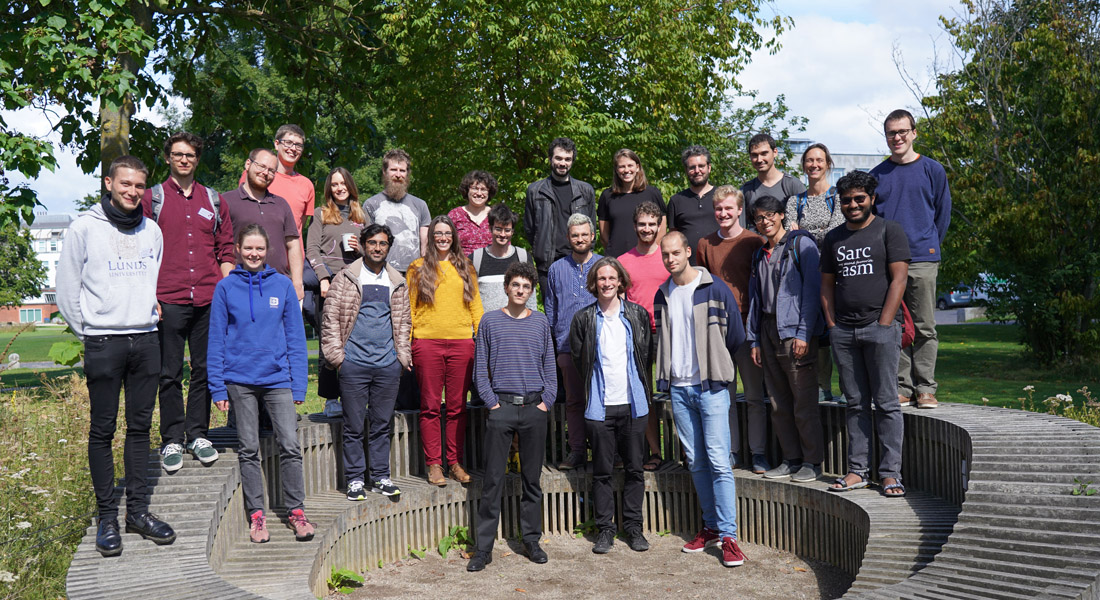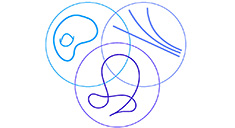Topological field theories and factorization homology

University of Copenhagen
23-27 August 2021
The masterclass will focus on the notion of a topological field theory. In the last few decades, topological field theory has highlighted exciting connections between low-dimensional topology, representation theory, and mathematical physics. Sophisticated tools from homotopy theory have in recent years gained importance in studying and constructing topological field theories. This is especially the case for so-called `fully extended' topological field theories that implement a higher degree of locality. These field theories are defined using higher symmetric monoidal categories and are characterized by the cobordism hypothesis, for which Jacob Lurie gave an elaborate sketch of proof in 2009. Tools naturally appearing in the study of extended topological field theories include the theory of higher dualizability and factorization homology.
The masterclass is aimed at advanced graduate students and postdocs interested in algebraic topology, representation theory and their interaction. We hope that it will take place in a hybrid format.
Early career participants can apply for financial support up to 2,500 DKK to partly cover accommodation and transportation costs to and from Copenhagen.
Satellite event in Edinburgh: David Jordan at the University of Edinburgh plans to organize a satellite event for the masterclass. Roughly, this means that at the ICMS in Edinburgh there will be the possibility to watch the conference together with other UK participants and to participate in the conference remotely (both on the Edinburgh as well as on the Copenhagen side, we will do our best to make this possible by providing the necessary technical equipment). Depending on interest, there will be additionally some social activities. The satellite event can be a good alternative for UK participants who, because of Covid or other reasons, cannot attend the conference in Copenhagen. Interested participants should contact David Jordan and/or the organizers in Copenhagen.
- Adrien Brochier (Université de Paris)
- Claudia Scheimbauer (TU München)
Lecture notes are found in the links below.
| Monday | Tuesday | Wednesday | Thursday | Friday |
|
9.30-10.30 |
9.30-10.30 |
9.30-10.30 |
9.30-10.30 |
9.30-10.30 |
| Coffee break | Coffee break | Coffee break | Coffee break | Coffee break |
|
11.00-12.00 |
11.00-12.00 |
11.00-12.00 |
11.00-12.00 |
11.00-12.00 |
| Lunch break | Lunch break | Lunch break | Lunch break | Lunch break |
|
13.30-14.30 |
13.30-14.30 |
13.30-14.30 |
13.30-14.30 Brochier lecture 6 |
13.30-14.30 Exercise Brochier |
| Coffee break | Coffee break | Coffee break | Coffee break | Coffee break |
|
15.00-16.00 |
15.00-16.00 Exercise Brochier |
15.00-16.00 Exercise Brochier |
15.00-16.00 |
15.00-16.00 |
Adrien Brochier: Quantum caracter varieties and topological field theories
For a reductive complex algebraic group G and a topological manifold X, the (G-)character variety of X is the moduli space of G representations of the fundamental group of X. If X is a surface, the associated character variety carries a canonical Poisson structure discovered by Atiyah--Bott and Goldman. This structure has an intrinsic definition, and can be described either combinatorially, using a decomposition of the surface X, or topologically in terms of intersections of loops on X. Accordingly, there are two main techniques to quantize these structures: a combinatorial approach, using certain well-known quantum algebras, and a topological one using skein theory.
A crucial observation is that categories of quasi-coherent sheaves (as opposed to algebeas of functions) on character varieties are naturally compatible with cutting and gluing of surfaces. This can be conveniently interpreted as a category-valued 2 dimensional topological field theory (TFT).
The main goal of this master class will be to explain how to use the formalism of factorization homology, which in that case is a refinement of Walker's notion of "skein category", to define and explicitly compute a 2d TFT from the representation theory of the quantum group associated with G. This provides canonical q-deformations of category of sheaves on character varieties of surfaces, and recovers, unifies and generalizes the combinatorial and the skein theoretic approach to their quantizations. Time permitting I'll present some applications and extensions of this formalism.
Rough plan:
1) Classical character varieties and their Poisson structure
2) Combinatorial and skein quantization
3) Categorified linear algebra
4) Factorization homology and combinatorial quantization
5) Factorization homology and skein theory
6) odds and ends
Material: http://abrochier.org/mc/
Claudia Scheimbauer: Dualizabitility, higher categories, and topological field theories
In the past decade, using higher categories has proven to be an essential ingredient in the study of topological field theories (TFTs) from a mathematical perspective. The most prominent and seminal result is the Cobordism Hypothesis, which gives a beautiful classification of “fully extended” topological field theories. Here, fully extended means that our TFT can be evaluated at manifolds and bordisms of all dimensions below a given one; conversely, the mathematical language needed to describe the structure is that of higher categories and dualizability therein. In physics, we can interpret these values at all dimensions as (possibly higher) categories of boundary conditions, as point insertions/observables, line operators or higher dimensional operators, etc., depending on the stiuation.
The main goal of this master class will be to explain how to use the cobordism hypothesis to construct TFTs and variations thereof. One example we will look at in detail arises from factorization homology for E_n-algebras, which will also be a key tool in the parallel master class. We will discuss (∞,n)-categories and dualizability in detail, and, time permitting, some extensions and variations.
The conference/masterclass will take place at Auditorium 1 in the August Krogh Building, Universitetsparken 13, 2100 København Ø. See detailed instructions on how to reach Copenhagen and the conference venue.
Tickets and passes for public transportation can be bought at the Copenhagen Airport and every train or metro station. You can find the ticket office on your right-hand side as soon as you come out of the arrival area of the airport. Danish railways have an agreement with 7-Eleven, so many of their shops double as selling points for public transportation.
A journey planner in English is available.
More information on the "find us" webpage.
We kindly ask the participants to arrange their own accommodation.
We recommend Hotel 9 Små Hjem, which is pleasant and inexpensive and offers rooms with a kitchen. Other inexpensive alternatives are CabInn, which has several locations in Copenhagen: the Hotel City (close to Tivoli), Hotel Scandivania (Frederiksberg, close to the lakes), and Hotel Express (Frederiksberg) are the most convenient locations; the latter two are 2.5-3 km from the math department. Somewhat more expensive – and still recommended – options are Hotel Nora and Ibsen's Hotel.
An additional option is to combine a stay at the CabInn Metro Hotel with a pass for Copenhagen public transportation (efficient and reliable). See information about tickets & prices.
Normal registration has ended . Please contact Jan Tapdrup jt@math.ku.dk to inquire if it is possible to participate nevertheless.

